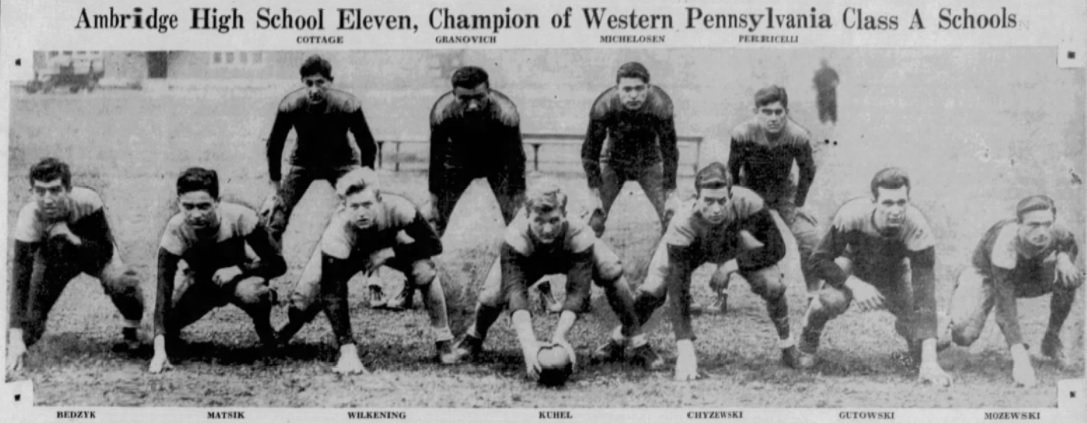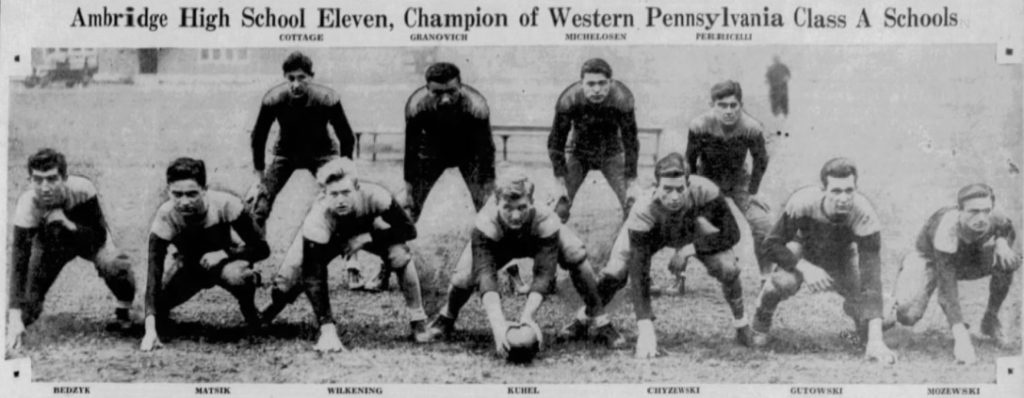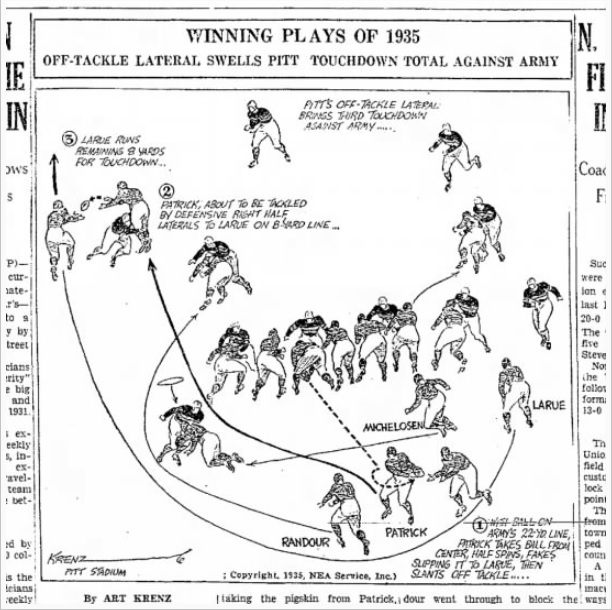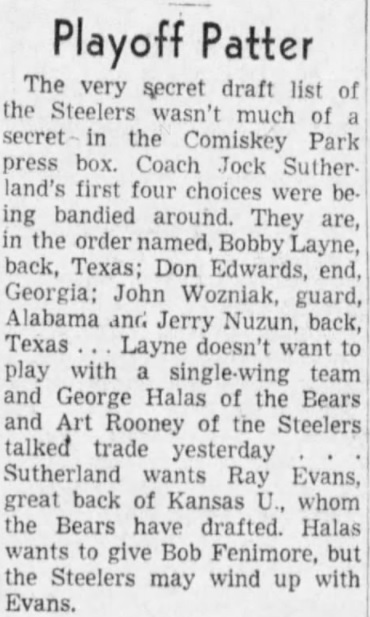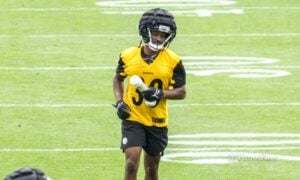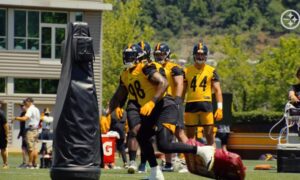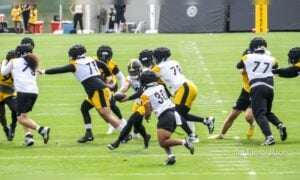CHILD OF IMMIGRANTS
Both his parents emigrated from Galicia, Poland. They were from the same area but arrived in the United States separately. Public records indicate that Martin Michelosen was either Polish, Austrian, or Ukrainian. He was born in Galicia in 1889 then the northernmost province of the Austrian portion of the Austro-Hungarian Empire. However, there were many diverse groups living here and Martin identified himself as Ukrainian but of Polish citizenship when applying for citizenship. He officially changed his name from Martyn Michalyszyn (transcribed from the Cyrillic alphabet used in the Ukrainian language) to Martin Michelosen when applying for American citizenship in 1931 18 years after his arrival.
PARENTS HAD GREAT TIMING
He arrived at New York City in April 1913. Anna Palichat arrived a few years earlier in July 1910 at age 15. They were from the same town in Galicia and married in Yonkers, New York in May 1915. They had great timing. Just over a year after leaving Galicia it was the scene of a large battle at the start of the First World War between the Russians and Austro-Hungarian forces. Had Martin stayed, he like my grandfather would have had to serve in the Austro-Hungarian Army. In the battle for Galicia in 1914, the combatants suffered up to 750,000 casualties during several weeks of fighting. There would be continued fighting in 1915-1916. Following the war, the Austro-Hungarian Empire dissolved, and Galicia became a part of Poland.
Martin was a steelworker for most of his working life. Some of that steel may have made it back to his homeland in the coming decades.
AMBRIDGE TWO-SPORT STAR
John Michelosen was born on February 13, 1916 in Ambridge, Pa. He was the firstborn with three younger sisters.
Michelosen developed into a two-sport athletic star at Ambridge High School. Moe Rubenstein coached Michelosen in both football and basketball. A legendary high school coach, today’s Ambridge High School football stadium is named after Rubenstein.
In football, Michelosen played in the backfield with box scores showing him at left halfback, fullback, and quarterback during his high school career. The Pittsburgh Press named Michelosen the WPIAL second team quarterback after the 1931 season. The next season, Pittsburgh Sun Telegraph highlighted Michelosen as one of three players on the 1932 undefeated Ambridge High School WPIAL Class A championship team “who rank with the greatest stars in district scholastic circles.”
BASKETBALL STANDOUT
The Ambridge basketball team featured Michelson at forward as an underclassman. He switched to guard as a junior during the 1932-33 school year. The Ambridge hoops team was hot. A little too hot, so the Aliquippa coach lodged a protest that Michelosen and another player were ineligible because they played with professionals in an independent league. The WPIAL declared both players eligible and Ambridge not only defeated Aliquippa but advanced in the WPIAL tourney. Michelosen scored the go-ahead points in a tight contest against East Pittsburgh and hit some clutch free throws to maintain the lead in a tight 24-22 win that sent the Bridgers into the semifinals against the Duquesne Steelers. Ambridge would succumb to Duquesne the eventual champion but Michelosen led Ambridge scoring attack and named to the WPIAL All-Tourney second team.
STRONG SENIOR YEAR
For his senior year, the Ambridge football team was rebuilding after losing eight of 11 starters. Michelosen was one of the returning starters they hoped would keep the team competitive. A Pittsburgh Press column called Sports Stew – Served Hot noted “Fans who know their football say that Johnny Michelosen, Ambridge halfback, throws a pass better than most of the college boys.” Ambridge defeated their first several opponents until Midland managed a 6-6 tie in their last game of the season. That tie likely cost them a second WPIAL title which was awarded to Scott High School of North Braddock.
The WPIAL determined the football championship by a point system in those days. Scott High which also had one tie did not play Ambridge head-to-head that season. Ambridge scored 275 points while giving up just 13. The Pittsburgh Press named Michelosen to their first team quarterback for the Class A All-Scholastic team.
Michelosen captained the Ambridge basketball team his senior year. They went undefeated in winning their section in 1934. Ambridge defeated defending champion Duquesne to avenge their semifinal loss the previous season. Unfortunately, Michelosen and the Ambridge team lost to New Kensington in the WPIAL final. Still, Michelosen helped lead Ambridge High School to strong results in their football and basketball teams.
MEETS SIGNIFICANT FACTOR IN HIS LIFE
The 1933 undefeated Ambridge football team may not have won the WPIAL, but Pitt football coach Jock Sutherland was the keynote speaker at the team’s end of season banquet on December 18, 1933. Coach Sutherland would be aware of the local football talent and this may have been the first time Johnny Michelosen met the man that would become a significant factor in his life.
PITT PLAYER
Michelosen played quarterback on Pitt’s freshman team in 1934. The NCAA did not allow freshmen on varsity football teams until 1972 when the NCAA changed eligibility rules. The Pitt varsity finished 8-1 in 1934 just missing a bid to the Rose Bowl.
A PLAY-CALLING TALENT
Going into Michelosen’s sophomore year, Sutherland had coached Pitt for 11 seasons. In 103 games, the Panthers recorded a 79-16 record with eight ties. Pitt was losing standout quarterback Miller Munjas but had 215-pound junior Arnold Green and Bob McClure to replace him. Local newspaper articles viewed sophomore Michelosen as “another candidate.” The 1935 varsity team had 22 sophomores on the 50-player roster. Greene started the season ahead of Michelosen. Sutherland promoted Michelosen by the second game because “Although he lacks most of the physical requisites which Greene has in abundance, Michelosen has the better supply of play-calling talent.”
Michelosen responded leading Pitt to a 35-0 win over Washington & Jefferson. Pitt played Notre Dame featuring Will Shakespeare who the Steelers will select as their first ever draft choice the next year. Notre Dame scored a field goal late in the game to win 9-6: Pitt’s only loss in 1935. Pitt finished the 1935 season 7-1-2 in what was a rebuilding year with Michelosen an established starter.
REGAINS STARTING POSITION
Michelosen started at quarterback in 1935. But Sutherland always encouraged competition and in the spring Arnold Green regained the starting position he had lost to Michelosen the previous season. Of course, under Sutherland’s style, he would substitute an entire backfield for a series of downs or an entire quarter to keep everyone fresh.
Michelosen reclaimed his starting role by the season opener. A 53-0 win against Ohio Wesleyan but Greene started against WVU 34-0. Both lost starting job to John Chickerneo a sophomore. But Michelosen played the bulk of games since Sutherland thought he was the best play-caller and blocker. Pitt lost to a strong Duquesne team 7-0 in between victories over Ohio State and Notre Dame. Pitt beat Washington in the Rose Bowl 21-0 and several organizations declared Pitt national champions in 1936. The Associated Press ranked Pitt’s 8-1-1 football team number three.
TEAM VOTES FOR NO BOWL GAME
Pitt players voted not to play in Rose Bowl. Accused of demanding for money and/or vacation. Michelson as team captain denied it writing a letter to the school. Chester Smith reporting for the Pittsburgh Press wrote that Pitt Chancellor and athletic director met with the team to decide on the Rose Bowl after turning down bids to Orange and Sugar Bowls. Coach Sutherland was unaware of the invitation and the meeting. The players voted by a single vote not to attend. School officials asked players to reconsider but a group of team leaders including Michelosen reiterated their intention not to accept the offer. One player later related that the team would have gone if Jock had asked them to go. The players resented the school administration excluding the coach.
Pitt did not play but the AP ranked them number one based on their tough schedule and finishing 9-0-1 at the end of the regular season. Michelosen selected to play in East-West Shrine game.
Press article said Michelosen started all but four games over his 3 seasons. Michelosen only ran the ball one time on a kickoff versus Washington. Normally, as quarterback in Sutherland’s single wing scheme he spotted weaknesses, called plays, and blocked. The halfbacks passed more in the single wing. Over three seasons with Michelosen the key player, Pitt won 24 games tied four and lost just two games.
MICHELOSEN OPTS TO COACH
The Philadelphia Eagles drafted Michelosen in the 12th and final round of 1938 draft. He was the 102nd out of 110 players drafted that year. But Jock Sutherland hired Michelosen to coach quarterbacks at Pitt. Jock tended to exclusively hire former Pitt players as his assistants. Pitt ranked number one for most of season in 1938 but finished ranked eight with a loss to Carnegie Tech who finished the season ranked sixth and third ranked Duke at number four to finish 8-2.
FORGOES NFL PLAY TO STICK WITH SUTHERLAND
Following the 1938 season. Michelosen joined an all-star team touring France to play American football against French rugby players to introduce the game to Europe. When Jock Sutherland resigned in 1939 during Pitt’s deemphasis of athletics, Pitt fired Michelosen so a new coach could hire own staff. Charley Bowser replaced Jock Sutherland. Wikipedia says Michelosen coached at Pitt in 1939 but I could not find contemporary newspaper articles to corroborate that claim.
The Chicago Cardinals tried to get his signing rights from the Eagles to join former Pitt teammate Marshall Goldberg. Michelosen declined to report in mid-August ruining the chances for an all-Pitt backfield at Chicago. An article mentioned that he declined to report in case a college hired Sutherland that “frowned on pro experience” and thus his chances to assist his mentor. Another mentions Michelosen forgoing playing in the NFL on Sutherland’s “promise to make him his assistant wherever he went.”
NFL ASSISTANT COACH
Dan Topping, owner of the NFL Brooklyn Dodgers signed Jock Sutherland to a three-year contract in January 1940. Newspapers named Michelosen as one of his possible assistants almost immediately. Indeed, Sutherland named Michelosen as backfield coach in July 1940. With former teammate Mike Getto, billed as an “all-college” coaching team and all three from Pitt. This coaching group led Brooklyn to consecutive second place finishes in the NFL East Division. The Steelers only win in 1941 knocked Brooklyn out of championship contention.
MILITARY SERVICE
After Pearl Harbor, head coach Jock Sutherland was heading for the military. John Michelosen followed his mentor’s lead. His Navy service began in June 1942. The military encouraged team sports such as football as a part of training the massive number of new recruits. Michelosen reported to Iowa University for pre-flight school in July as physical training instructor. Tom Hamilton handpicked Michelosen and some other officers to train pilot cadets and serve as the backbone of the football team at one of the four navy flight schools (Iowa Seahawks, St Mary’s, North Carolina & Georgia). Michelosen did not coach but was reserve player. The Seahawks played colleges and other service teams finishing 7-3.
The next year Michelosen coached a training unit team at Iowa that tied for base championship. In 1944 he went to Virginia Beach then Corpus Cristi with Moon Mullins as backfield coach in 1945. He completed military service in December 1945. Michelosen attended the meeting between Jock Sutherland and Steelers co-owner Bert Bell to discuss taking over the coaching reins for the Steelers in December 1945.
STEELERS COACH
FULLTIME ASSISTANT
The Steelers hired Sutherland and Michelosen as fulltime coaches. They were on contract to work 12 months while the other assistants were part-time. Michelosen handled scouting duties including checking out the opposition.
Within days of the 1947 playoff loss to the Eagles Sutherland went to Bowl games including the Sugar Bowl, while Michelosen headed to Dallas for Cotton Bowl to scout prospective players.
In March 1948, he travelled with Jock to Coatesville for coach clinic before Sutherland headed south on his fateful scouting trip. After Sutherland was found and hospitalized, Michelosen flew to Kentucky with other Friends and team physician to bring Jock back to Pittsburgh. Tragically, Jock Sutherland died on the operating table as surgeons tried to remove a malignant brain tumor.
Steelers Head Coach
Steelers named Michelosen head coach with a two-year contract within a week of Jock’s death. In his mentor’s own words, “Johnny knows as much about football, about my system as I do. I’m getting up in years and when we install a system here and we find it working out. Johnny will be ready to step up. He deserves the chance.” Jock planned to coach his five years then give the reins over to Michelosen while remaining in the background. His plan was accelerated, and he remained in the background even in death. There was no doubt the Steelers would retain the single wing offense. That is what Michelosen had been groomed for since his playing days at Pitt.
At 32, Michelosen was the youngest head coach in the NFL at that time. He was not the youngest Steelers coach to take the helm. Forrest “Jap” Douds the first coach was only 28 when named Steelers coach. Albert “Luby” DiMeolo the second coach was 31. After that, Art Rooney chose slightly older and more experienced coaches.
TOUGH START
Various colleges recruited Michelosen over the years, but he chose to stay with his mentor. So, this was his first head coaching job. During this period, the NFL competed with the All-American Football Conference to sign players. In his first camp as head coach, tragedy struck the team after the first preseason game at the end of August. Second year tackle Ralph Calcagni complained of cramps after game. He ended up in hospital for an appendectomy but died of gangrenous blood clot one week later. A tough start for even an experienced head coach.
The backfield took some hits as fullback Walt Slater retired and Michelosen released halfback Steve Lach, who set the then Steeler’s franchise record of nine touchdowns in a season in 1947, without explanation days before the season opener. The Steelers banked on Ray Evans who they traded away Bobby Layne for to fill the gap.
WHAT IF?
Jock Sutherland wanted Ray Evans who was a traditional single wing half back that could run, pass, and block. The Steelers traded Bobby Layne who would win three championships with the Detroit Lions to the Bears to obtain signing rights to Evans. Sutherland failed to sign Evans who committed to work at a bank. John Michelosen convinced Evans to sign with the Steelers following Sutherland’s death with a deal allowing him to take a leave of absence from the bank. After a successful season, Michelosen was unable to convince Evans to stay in football and lost his services after only played one season as Evans had promised. What if the Steelers kept Bobby Layne instead and Art Rooney convinced Michelosen to transition to the T Formation?
PASSING GAME BACKFIRES
Injuries and bad breaks led to a 2-4 record in the first half of the 1948 season. The first three losses by seven points or less. Opponents followed the example set by the Eagles in 1947 by crowding line of scrimmage with seven to eight players to stifle the single wing. Sound familiar? Michelosen announced before the season that he intended to open the single wing offense up in the preseason. He opened the offense by attempting 266 passes (34.7% of total plays) compared to 209 (29.6% of plays) in 1947 but it backfired. The Steelers threw 29 interceptions including 17 by Ray Evans. The team finished the season at 4-8.
BATTLE OF FORMATIONS
In 1949 Michelosen reduced the passing attack and increased the run. Michelosen drafted Jim Finks more for his ability in the defensive secondary than his passing skills. “The single wing can equal the T (formation) in all respects. The T is too much a passing game and gets away from the original concept of football. Throwing the ball around the field turns football into basketball …. And this system (single wing) has quicker opening plays than the ‘T.’” Michelosen stubbornly defended the single wing as NFL teams transitioned from the T formation to the winged T where the quarterback lined up behind center as in the T but had advantages of the single wing with the offset back. Visualize Chip Kelly’s offense with the Philadelphia Eagles just a few years ago to get an idea of the single wing and its potential.
Michelosen faced turmoil as the NFL and All-American Conference merged. Art Rooney had cut salaries leading players’ discontent. Rooney restored salaries as fans started buying more tickets with an improved 6-5-1 record and second place in the division. The “Prez” signed Michelosen to another two-year contract.
WOOED FOR COLLEGE VACANCY
In early 1950, Penn State wooed Michelosen for their head coach vacancy. He removed himself from consideration with Penn State eventually hiring Rip Engle, head coach from 1950-65 who hired Joe Paterno as an assistant. Penn State was still using the single wing, but Engle changed to T formation as one of his first steps. first game Browns lose 30-17 and later 45-7. Finish 6-6. Walt Kiesling back. When asked about a Joe Geri who had a good arm, Michelosen’s responded, “Single wing quarterbacks must know how to block. Joe has a lot to learn yet.” Geri led the team in rushing and passing. He ran for 705 yards and passed for 866 more but threw 15 interceptions with only six touchdown passes. The Steelers had another slow start going 2-5 before winning four of the last five games to go 6-6.
“OUT WITH MICHELOSEN”
The Steelers opened the 1951 season with a tie and three losses. Fans were not showing up to cheer the team. Those in the stands jeered the Steelers and singled out Michelosen and players like Val Jansante voicing their displeasure at the lack of wins and the boring style of play. The final straw may have been a large sign that fans held saying “Out with Michelosen, Jansante, and Sinkovitz.” Jansante quit the team midseason saying, “I got booed before I played a single game in Pittsburgh this year. The first booing came when I was introduced … in the first home game and the booing hasn’t let up since. … there’s no use playing for fans who boo you at every turn.” Jansante had set a then record 10 receptions in a game in Pittsburgh’s conservative run offense. Tough crowd. The Steelers finished 4-7-1.
The Steelers showed a profit in Michelosen’s first three seasons. They broke even in the fourth, but no shows were becoming common with 1000 for the last home game in 1951. Rooney suggested that Michelosen shift from the single wing to the T but Michelosen refused. Art Rooney being more pragmatic than sentimental asked for Michelosen’s resignation.
FUTURE TALENT
Michelosen emulated Sutherland in both the style of play and even personality. Michelosen was highly regarded by other football coaches for his knowledge of the game and agreeableness. His failure to effectively open single wing and lack of control of players stymied his success. Ultimately, it was his stubbornness that cost him his job as Art Rooney likely would have given him a chance to try changing the offense. The very next year Jim Finks who Michelosen valued as a defensive back gained the Pro Bowl as a passing quarterback. Still, Michelosen, a first-time head coach replacing a legend managed to field dangerous teams and stocked the team with talented players like Ernie Stautner, Lynn Chandnois and Elbie Nickel among others who would be stars for the remainder of the decade.
PITT COACH
Michelosen stayed in Pittsburgh as the University of Pittsburgh hired him to assist head coach Lowell “Red” Dawson in 1952 by handling the defense. Pitt named Michelosen head coach following the 1954 season. That season, the athletic director Tom Hamilton named himself the interim coach after Red Dawson’s heart attack three games into the season.
BROWN SUGAR BOWL
Michelosen pledged to continue use of the split T offense at Pitt. In 1955, Pitt reached number 11 in the national rankings. Pitt ranked for the first time since 1938 and played its first bowl game since 1937 in Michelosen’s first year. Pitt lost 7-0 to seventh ranked Georgia Tech in the Sugar Bowl. This game was significant because it featured the first black player appearing in the Sugar Bowl amidst lots of controversy. Back in 1941, Boston College accepted a Sugar Bowl bid with Lou Montgomery a star halfback who happened to be African-American. Boston College did not play Montgomery because of the Bowl game’s segregation policy at that time.
The pushback included the Georgia Governor sending a message to the Georgia Board of Regents to prohibit segregated sports teams from Georgia to participate in games against integrated team. The President of Georgia Tech refused to honor the Governor’s demand. Pitt stated, “Bobby Grier will sleep, eat, practice and play with his team at the Sugar Bowl.” The Tulane officials hosting the game accommodated Pitt. Even the Pitt marching band with both white and black musicians included. Pitt also stated that “We will be willing to accept the reservations of all Pitt rooters from any section of the country, who desire to sit in our section.” Meaning the Pitt section would be open to all regardless of the color of their skin in the segregated south.
Ironically, a defensive penalty called on Grier set up a first and goal for Georgia Tech who scored the winning touchdown on the next play. There were accusations of a fixed call, but the referee was from western Pennsylvania who admitted he made a bad call after reviewing the game film.
ANOTHER BOWL THEN LACKLUSTER YEARS
In 1956 Pitt finished 7-3-1 and ranked 13th in the nation. They lost 21-14 to fourth ranked Georgia Tech in the Gator Bowl. 1957-1962 were lackluster years with losing seasons in 1957 (4-6) and 1961 (3-7). The highpoint of the 5-4-1 1958 team was a 14-14 tie with then number one Army. The tie knocked the Cadets out of national championship contention who finished number three with just the tie the blemish on their record. Pitt’s 1959 team upset number seven ranked Penn State to finish the season 6-4 and ranked number 20.
The 1960 team ranked as high as number 12 but closed the season with a 7-7 tie with Army and a 14-3 loss to number 16 Penn State. The team ended with a 4-3-3 record and ranked 20. This team featured nine players drafted by NFL including future Hall of Fame tight end Mike Ditka. Future congressman and convicted felon QB Jim Traficant quarterbacked and was later drafted by the Steelers in 1963. Following 1961, Pitt improved to 5-5 in 1962.
PITLESS BOWL YEAR
Pitt’s finest year under Michelosen was in 1963 but had a disappointing finish. Pitt finished the regular season with a 9-1 record and ranked number four. Their only loss to number 10 Navy led by Roger Staubach 24-12. The JFK assassination forced a two-week postponement of Pitt’s scheduled game against Penn State. Pitt’s administration declined a Gator Bowl bid to see if they could gain an Orange or Cotton Bowl bid to vie for the national championship. The Bowl committees did not extend invitation to Pitt because of the unknown outcome of the Penn State game which Pitt eventually won 21-20 on December seventh but it was too late. Despite a 9-1 record, Pitt received no bowl bid. Pitt running back Paul Martha placed eleventh in the Heisman voting with 79 points.
Michelosen would coach two more seasons at Pitt. In 1964 they finished 3-5-2 with a narrow 17-15 loss to number one ranked Notre Dame. In 1965 Pitt dropped to 3-7 but beat Penn State 30-27 in Michelosen’s final season as a head coach.
IVY LEAGUE STANDARDS
Athletic director Frank Carver fired Michelosen after the 1965 season. Complaints from alumni and various sports journalists included that his approach was too conservative, and he wouldn’t open the offense up. Critics also pointed out that he was not a strong recruiter and only brought in 16 scholarship players in 1965. Michelosen remained silent and positive despite very harsh public criticism.
In fairness, the Pitt hierarchy had maintained the athletic deemphasis since 1939. The 1950’s and early 1960’s saw Pitt’s administration increasing their academic standards. At same time, it refused to relax the academic standards for athletes. At the same time, Pitt maintained tough schedules and schools tough entrance requirements. In athletics, it was an Ivy league academic standard but not an Ivy League schedule. Also, Carver instituted a no red shirting policy. Despite these disadvantages, Michelosen did not complain and managed some highly successful seasons. For example, the great 1963 team graduated 66 of 71 players including 15 dentists.
Michelosen’s Pitt teams achieved winning records in six of eleven his seasons. Two bowl games to start. After Michelosen left, Pitt suffered three straight 1-9 seasons. Pitt did not have another winning program until 1973 and the Johnny Majors era.
PITT FOOTBALL TALENT
Michelosen’s 11-year tenure saw 56 Panther drafted by the NFL with 30 playing professionally. Pitt had not had a player named an All-American since Jock Sutherland’s departure in 1939 until Michelosen’s tenure from 1955-1965. He developed four: Joe Walton, John Guzik, Mike Ditka, and Paul Martha. Marty Schottenheimer another of his notable recruits. Once he left, Pitt would not have an all-American until Tony Dorsett and Al Romano in 1976.
CALIFORNIA BOUND
Michelosen stated he wanted to continue coaching after his dismissal. But it was not to be. The San Francisco 49ers hired him as a scout-at-large in December 1966. Michelosen eventually relocated his family to California. The 49ers promoted him from head scout to director player personnel in 1972. He kept working until the very end. On October 17, 1982, John Michelosen died the day after attending New Mexico – San Diego State game in San Diego with other scouts. He was 66 years old.
A side note, in October 1966 Michelosen attended the Curbstone Coaches dinner where Joe Bach, his successor as Steelers head coach, was inducted into their Hall of Fame. Michelosen congratulated Bach after his acceptance speech. Immediately after, Bach turned but then collapsed and died seconds later.
PRIOR STEELERS COACHES
Here is a list of coaches prior to John Michelosen’s tenure with links to Steelers Depot articles about them:
| Forrest Douds
1933 |
Luby DiMeolo
1934 |
Joe Bach
1935-36 1952-53 |
John McNally
1937-39 |
Walt Kiesling
1939-40 1941-44 1954-56 |
| Bert Bell
1941 |
Aldo Donelli
1941 |
Greasy Neale*
1943 |
Phil Handler**
1944 |
Jim Leonard
1945 |
| Jock Sutherland
1946-47 |
John Michelosen
1948-51 |
|||
*Co-coach of 1943 Steagles **Co-coach of 1944 Car-Pits
YOUR SONG SELECTION
I always like to include a song. Here is Time of the Season by The Zombies. Released in 1968 a few years after Michelson’s last season coaching Pitt. In the fall he was saying it’s the time ….

